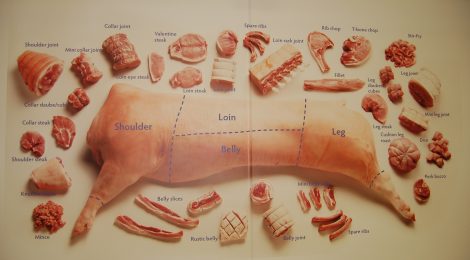
China’s pork economics
Sweet and sour pork, boiled pork slices in fiery sauce, Dong pou rou, pork dumplings… When it comes to sitting around the table to have meal, Chinese especially like to eat pork. In fact, China leads the world in terms of both supply and demand for pork meat. Therefore, as the population has become richer and the middles class has widened, more and more pork has been put on China’s dinner tables every year.
As a consequence, domestic prices of the ever-present ingredient in the meals consumed in the Middle Kingdom have been soaring and lead to a rush of pork imports from the US and elsewhere to meet the demand. According to the China’s Ministry of Agriculture, in the last year prices have risen by 50.6 per cent: the average pork price in April this year was ¥25.67 per kilogram (roughly €3.5), compared to ¥17.35 the same period last year.
This has dri ven up inflation. Latest data from the National Bureau of Statistics show that consumer prices were up 2.3 per cent in March from a year before, a steady trend from the previous month, beating the expectations for an increase of 1.9 per cent. The food-price component of the index rose by 7.6 per cent in the same month, mainly because of higher pork and vegetable prices, with pork having high weighting in the calculation of consumer-price index.
ven up inflation. Latest data from the National Bureau of Statistics show that consumer prices were up 2.3 per cent in March from a year before, a steady trend from the previous month, beating the expectations for an increase of 1.9 per cent. The food-price component of the index rose by 7.6 per cent in the same month, mainly because of higher pork and vegetable prices, with pork having high weighting in the calculation of consumer-price index.
The sharp rise in prices over the last 12 months caught the pork market by surprise, as pork prices have been historically volatile in China. The emergency is also the consequence of low profits for farmers before the prices run-up, which prompted many to give up on pigs. Other farmers were forced out of the market by the implementation of more strict environmental regulations, especially water pollution control initiative introduced in 10 provinces. Finally an outbreak of disease earlier this year killed many piglets. These factors contributed to the depletion of stocks.
For two months starting on last Thursday, the Beijing municipal government unveiled an unprecedented release of 3.05 million kilograms of frozen pork form its reserves into the market over two months starting on Thursday in an attempt to lower prices. As much as 50 thousand kilograms of pork will be sold every day to 121 supermarket chains in the capital to some 22 million residents. Beijing will also provide subsidies of up to ¥9 per kilogram to incentivise pork vendors to cut prices for consumers. Subsidies will also be used to encourage 20 per cent more pigs to be slaughtered during the same period.
Authorities expect a fall in pork prices by 18 per cent as a result of these initiatives. Ye Zhenqin, a senior official of the Ministry of Agriculture, said last Thursday that prices will stabilize as supply increases. Piglet survival rates will improve as the weather warms up. Furthermore, a number of large companies have expansion plans. This should stabilize prices over the coming months and might even push prices lower as the end of 2016 nears.
However, some observers believe that, even with these measures, pork prices can still cause problems in China. In 2011, pork jumped 57 per cent in a year, causing a surge in inflation. Current pork prices are now above that 2011 peak, and it is unclear that the government will really be able to help. Sustaining this argument, last year the US Department of Agriculture released a report arguing that government attempts to buy pork when it got too cheap had “more of a psychological effect than an actual market impact.”




